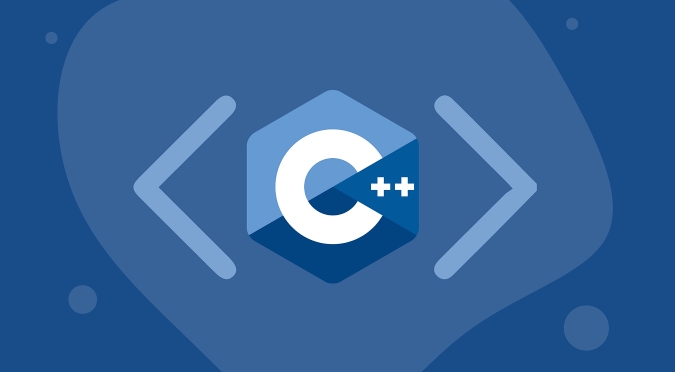To send HTTP requests, you need to use a third-party library, and it is recommended to use libcurl. The specific steps are: 1. Initialize curl; 2. Set URLs and options (such as automatic jump); 3. Execute requests and process response results; 4. Clean up resources. If you need to get the response content, you need to define a buffer and callback function to handle data writing. For POST requests, enable the POST option and set the data and optional header information. Finally, remember to clean up the relevant resources.

To send an HTTP request, C's own standard library does not directly support network requests, but you can use third-party libraries to implement it. Common choices include libcurl, Boost.Beast (based on Boost.Asio), etc. If you just want to quickly complete a simple GET or POST request, using libcurl is the most convenient.

Send HTTP requests using libcurl
libcurl is a very popular C/C network request library, cross-platform and powerful. To use it, you first need to install and link to your project.

Basic steps:
- Initialize curl
- Set URL and other options
- Execute a request
- Clean up resources
The sample code is as follows:

#include <iostream>
#include <curl/curl.h>
int main() {
CURL *curl = curl_easy_init();
if (curl) {
curl_easy_setopt(curl, CURLOPT_URL, "https://example.com");
curl_easy_setopt(curl, CURLOPT_FOLLOWLOCATION, 1L); // Automatically jump CURLcode res = curl_easy_perform(curl);
if (res != CURLE_OK)
std::cerr << "curl_easy_perform() failed: " << curl_easy_strerror(res) << std::endl;
curl_easy_cleanup(curl);
}
return 0;
}If you want to get the response content, you also need to set a callback function and receive buffer.
Get HTTP response content
By default, curl will not save the returned data, you need to provide a write function yourself.
The method is:
- Define a string or buffer to store data
- Implement a
WriteCallbackfunction - Set
CURLOPT_WRITEFUNCTIONandCURLOPT_WRITEDATA
Sample snippet:
size_t WriteCallback(void* contents, size_t size, size_t nmemb, void* userp) {
((std::string*)userp)->append((char*)contents, size * nmemb);
return size * nmemb;
}
// ...
std::string readBuffer;
curl_easy_setopt(curl, CURLOPT_WRITEFUNCTION, WriteCallback);
curl_easy_setopt(curl, CURLOPT_WRITEDATA, &readBuffer);
// After the request is completed, there is a response body in the readBuffer std::cout << readBuffer << std::endl;This way you can get the content returned by the server, such as JSON data or HTML pages.
Setting up POST requests and other parameters
GET requests are just the basics, and sometimes you also need to send POST requests, such as submitting forms or calling API interfaces.
Key points for sending POST:
- Enable
CURLOPT_POST - Set
CURLOPT_POSTFIELDSto the data you want to send - Optionally set header information such as Content-Type
For example:
curl_easy_setopt(curl, CURLOPT_POST, 1); curl_easy_setopt(curl, CURLOPT_POSTFIELDS, "name=value&key=secret"); // If you want to customize the header struct curl_slist *headers = NULL; headers = curl_slist_append(headers, "Content-Type: application/x-www-form-urlencoded"); curl_easy_setopt(curl, CURLOPT_HTTPHEADER, headers);
Don't forget to clean up the headers list at the end:
curl_slist_free_all(headers);
Conclusion
In general, it is not complicated to initiate HTTP requests in C. The key is to choose the right library and understand the basic operations. Although libcurl is a C-style API, it is stable enough to suit most scenarios. If you are pursuing modern C style, you can also check out more modern libraries such as Boost.Beast or cpp-httplib. Basically, that's all, just change it according to the examples.
The above is the detailed content of How to make an HTTP request in C ?. For more information, please follow other related articles on the PHP Chinese website!

Hot AI Tools

Undress AI Tool
Undress images for free

Undresser.AI Undress
AI-powered app for creating realistic nude photos

AI Clothes Remover
Online AI tool for removing clothes from photos.

Clothoff.io
AI clothes remover

Video Face Swap
Swap faces in any video effortlessly with our completely free AI face swap tool!

Hot Article

Hot Tools

Notepad++7.3.1
Easy-to-use and free code editor

SublimeText3 Chinese version
Chinese version, very easy to use

Zend Studio 13.0.1
Powerful PHP integrated development environment

Dreamweaver CS6
Visual web development tools

SublimeText3 Mac version
God-level code editing software (SublimeText3)
 C function example
Jul 27, 2025 am 01:21 AM
C function example
Jul 27, 2025 am 01:21 AM
Functions are the basic unit of organizing code in C, used to realize code reuse and modularization; 1. Functions are created through declarations and definitions, such as intadd(inta,intb) returns the sum of the two numbers; 2. Pass parameters when calling the function, and return the result of the corresponding type after the function is executed; 3. The function without return value uses void as the return type, such as voidgreet(stringname) for outputting greeting information; 4. Using functions can improve code readability, avoid duplication and facilitate maintenance, which is the basic concept of C programming.
 C decltype example
Jul 27, 2025 am 01:32 AM
C decltype example
Jul 27, 2025 am 01:32 AM
decltype is a keyword used by C 11 to deduce expression types at compile time. The derivation results are accurate and do not perform type conversion. 1. decltype(expression) only analyzes types and does not calculate expressions; 2. Deduce the variable name decltype(x) as a declaration type, while decltype((x)) is deduced as x due to lvalue expression; 3. It is often used in templates to deduce the return value through tail-set return type auto-> decltype(t u); 4. Complex type declarations can be simplified in combination with auto, such as decltype(vec.begin())it=vec.begin(); 5. Avoid hard-coded classes in templates
 C fold expressions example
Jul 28, 2025 am 02:37 AM
C fold expressions example
Jul 28, 2025 am 02:37 AM
C folderexpressions is a feature introduced by C 17 to simplify recursive operations in variadic parameter templates. 1. Left fold (args...) sum from left to right, such as sum(1,2,3,4,5) returns 15; 2. Logical and (args&&...) determine whether all parameters are true, and empty packets return true; 3. Use (std::cout
 C range-based for loop tutorial
Jul 27, 2025 am 12:49 AM
C range-based for loop tutorial
Jul 27, 2025 am 12:49 AM
C's range-basedfor loop improves code readability and reduces errors by simplifying syntax. Its basic structure is for(declaration:range), which is suitable for arrays and STL containers, such as traversing intarr[] or std::vectorvec. Using references (such as conststd::string&name) can avoid copy overhead and can modify element content. Notes include: 1. Do not modify the container structure in the loop; 2. Ensure that the range is effective and avoid the use of freed memory; 3. There is no built-in index and requires manual maintenance of the counter. Mastering these key points allows you to use this feature efficiently and safely.
 C binary search tree example
Jul 28, 2025 am 02:26 AM
C binary search tree example
Jul 28, 2025 am 02:26 AM
ABinarySearchTree(BST)isabinarytreewheretheleftsubtreecontainsonlynodeswithvalueslessthanthenode’svalue,therightsubtreecontainsonlynodeswithvaluesgreaterthanthenode’svalue,andbothsubtreesmustalsobeBSTs;1.TheC implementationincludesaTreeNodestructure
 C call python script from C example
Jul 26, 2025 am 07:00 AM
C call python script from C example
Jul 26, 2025 am 07:00 AM
Calling Python scripts in C requires implementation through PythonCAPI. First, initialize the interpreter, then import the module and call the function, and finally clean up the resources; the specific steps are: 1. Initialize the Python interpreter with Py_Initialize(); 2. Load the Python script module with PyImport_Import(); 3. Obtain the objective function through PyObject_GetAttrString(); 4. Use PyObject_CallObject() to pass parameters to call the function; 5. Call Py_DECREF() and Py_Finalize() to release the resource and close the interpreter; in the example, hello is successfully called
 C reference example
Jul 28, 2025 am 02:23 AM
C reference example
Jul 28, 2025 am 02:23 AM
References are alias for variables, which must be initialized at declaration and cannot be rebinded. 1. References share the same memory address through alias. Modifying any name will affect the original value; 2. References can be used to achieve bidirectional transmission and avoid copy overhead; 3. References cannot be empty and have the grammar, and do not have the ability to repoint compared to pointers; 4. ConstT& can be used to safely pass parameters, prevent modification and support binding of temporary objects; 5. References of local variables should not be returned to avoid dangling reference errors. Mastering citations is the key foundation for understanding modern C.
 100 STD :: Example
Jul 26, 2025 am 05:15 AM
100 STD :: Example
Jul 26, 2025 am 05:15 AM
std::deque is a sequence container that supports efficient insertion and deletion at both ends. 1. Push_front/pop_front and push_back/pop_back operations can be used in the head and tail; 2. Support random access and subscript modification, but the memory is not continuous, and the &dq[0] cannot be used as a C array; 3. Elements can be added and deleted at any position through insert and erase, but the intermediate operation efficiency is low; 4. Suitable for sliding windows, BFS, double-end buffering and other scenarios; 5. Custom types can be stored, and it is necessary to pay attention to the possible failure of iterators; in short, when it is necessary to frequently add and delete elements at the beginning and end without requiring continuous memory, std::deque is better than vector






